Overview of Nuke
This week an overview of Nuke where introduced, the basics of the viewer window, time line including in and out points, the projects settings information’s in the viewer (Bottom), Gama and Gain control de exposure of the image (top viewer). Also, showing the Node Graphs and adding more nodes to the project.
Setting project directory
Each section, the projects will be at the desktop. A folder called Nuke_Overview where downloaded from blackboard to the desktop.
Now with my Nuke 13.0v1 open and before bring any Nuke Comp script, Press S in the Keyboard to set up the project settings. Pressing the `Script Directory` folder in project settings box and search to Nuke_Overview folder saved to the desktop and press open not going in to any of the folders. With the project directory set which is very similar to Maya, to have it all in specific folders, to be a where when to move files around, and then, go to Files, Insert Comp Nodes, navigates to the Nuke_Overview folder saved to the desktop once again, click in the nuke_scripts, and choose the folder, and click open.
To view the image on the viewer window click and press 1 in the keyboard.
Overview of Nuke
This week an overview of Nuke where introduced, the basics of the viewer window, time line including in and out points, the projects settings information’s in the viewer (Bottom), Gama and Gain control de exposure of the image (top viewer). Also, showing the Node Graphs and adding more nodes to the project.
Setting project directory
Each section, the projects will be at the desktop. A folder called Nuke_Overview where downloaded from blackboard to the desktop.
Now with my Nuke 13.0v1 open and before bring any Nuke Comp script, Press S in the Keyboard to set up the project settings. Pressing the `Script Directory` folder in project settings box and search to Nuke_Overview folder saved to the desktop and press open not going in to any of the folders. With the project directory set which is very similar to Maya, to have it all in specific folders, to be a where when to move files around, and then, go to Files, Insert Comp Nodes, navigates to the Nuke_Overview folder saved to the desktop once again, click in the nuke_scripts, and choose the folder, and click open.
To view the image on the viewer window click and press 1 in the keyboard.
Rodrigo Rodrigues
Week 1: Key themes and Module overview
With Mr. Florian Stephens MA, BA (Hons), PGCTAD FHEA
Senior Lecturer in Digital Media
Doctoral Researcher

Annotated Bibliography (1)
Prince, S. (2010). Through the looking glass: Philosophical toys and digital visual effects. Projections, 4(2), 19-38. https://doi.org/10.3167/proj.2010.040203
The Journal Article written by Stephen Prince brings his thoughts and analysis, that surrounds and questions the visual effects skepticism, often discussed in visual effects in film studies.
The article starts detouring to the beginnings of cinema, to an era where a well traveled bridge that cooperated to the creation and arising of numerous movies, gives the reader an understanding that Professor Prince is comparing the era of the philosophical toys in how digital tools are used in film productions today. This bridge connects Art to Science.
The article brings up a consideration and says that “fantastic words are built with a physically accurate rendition of the behaviour of solids, liquids, gases, light, movement and sound”(Prince, 2010, p.19). He also affirms that digital visual effects in cinema, are the domain of the area of contemporary culture. Certainly visual effects will keep holding the bridge that connects the art with science today.
Rodrigo Rodrigues
Actor, Director, Producer
Visual effects student at University of West London


Detouring throughout cinema history, here is an extra information sharing - Original rotoscope. Artist drawing on a easel that's transparent, which then, the image is being beamed onto a single movie frame by a movie projector. Patent Drawing for Max Fleischer's original rotoscope.
Week 2: Visual Effects and the Spectacular
With Mr. Florian Stephens MA, BA (Hons), PGCTAD FHEA
Senior Lecturer in Digital Media
Doctoral Researcher


Annotated Bibliography (2)
References
McClean, S. T. (2008). Digital storytelling: The narrative power of visual effects in film. MIT Press. pp. 01-14 https://www.vlereader.com/Reader?ean=9780262304184
The writer, researcher and public speaker Shilo McClean Chapter 1 of her book “Digital storytelling: the narrative power of visual effects in film”, focuses in such arguments that spectacles of digital technologies undermines storytelling, giving the readers an opportunity to investigate pre-conceptual movie critics written by some professionals; “Sydney Morning Herald” Paul Byrnes, Joel Black, Laura Kipnis, David Bordwell, Janet Staiger and Kristin Thompson. The critics approach shows to be for each professionals self interest, related to their positions; Scriptwriters, Movie critics, Film theorists and or Filmmakers. Creativity has no limits and technology will follow it, as the book goes into the investigation of all apparently relevant critics, creates an upsetting feeling of misunderstanding of these critics towards certain departments like the DVFx, that is part of all production process and not just pos-production. Storytelling “flaws” and or “success” depends on numerous factors in a film production and even in the audience point of view after the film release.



With Mr. Florian Stephens MA, BA (Hons), PGCTAD FHEA
Senior Lecturer in Digital Media
Doctoral Researcher
Annotated Bibliography (3)
Harvard Reference:Gunning, T. (2006) 'The Cinema of Attractions: Early Film, Its Spectator and the Avant-Garde', in Strauven, W. (1.) The Cinema of Attractions Reloaded. Amsterdam: Amsterdam University Press, pp. 381-388.
Tom Gunning expresses his disappointment in how early 20th century's film history had been theorised and replaced by the narrative films, as standard in how cinema should be seen and received by the audience after 1910. This approach encourages a systematic belief that films mostly follow a theatrical storytelling, establishing the narrative as the main concept of the film format, undermining the early movies and misunderstanding, that the film was first presented to the audience using the imagery to storytelling. Quoting Méliès, Tom Gunning wrote “ Méliès points out, the trick film, perhaps the dominant non-actuality film genre before 1906, is itself a series of displays, of magical attractions, rather than a primitive sketch of narrative continuity”. I agree with Méliès and Tom Gunning words, taking into consideration that early cinema exhibitions, were an attraction and I will follow and explore the “technological wonder” to approach the audience in a organic relationship, between“Its Spectator and the Avant-garde”.
Rodrigo Rodrigues
Actor, Director, Producer
Visual effects student at University of West London



Tom Gunning books








Tom Gunning Films/TV/Self
Actor | Miscellaneous Crew




Fictional situations tend to be restricted to gags, vaudeville numbers or recreations of shocking or curious incidents (executions, current events).

With Mr. Florian Stephens MA, BA (Hons), PGCTAD FHEA
Senior Lecturer in Digital Media
Doctoral Researcher
Annotated Bibliography (4)

'Shapes' (2011)The Code, Series 1,Episode 3, Box of Broadcasts, at:https://learningonscreen.ac.uk/ondemand/index.php/prog/01E00B35?bcast=68266791 (Accessed 01 November 2020).
Presented by BBC2, as an arrogant and self destructed drunk but maybe a visionary artist and also as an artist revolutionary from the 20th century, is Jackson Pollock.
“Disillusioned with convectional painting technics”, as the presenter says.
Pollock uses a different approach and methods of painting that got the attention of many. His art is controversial and so is he, says BBC2. Considered the artist of the Century by Life Magazine, but also considered by many as art, of a drunk lunatic. Pollock, under the influence of alcohol as the program says, performed his oloniex painting, dropping the colours on the giant canvas placed on the floor, layer by layer, day by day. Creating his complex and fractal qualities in his work, describes the infinite nature fractals and patterns that built this world, that perhaps was the inspiration and contribution of other arts, like the movie animations that comes to life, thanks to the success of Pollock.
Rodrigo Rodrigues
Actor, Director, Producer
Visual effects student at University of West London



Week 5: The Uncanny Valley
With Mr. Florian Stephens MA, BA (Hons), PGCTAD FHEA
Senior Lecturer in Digital Media
Doctoral Researcher

Annotated Bibliography (5)
Harvard Reference: Lay, S. (2015, November 13). Uncanny Valley: Why we find human-like robots and dolls so creepy | Stephanie lay. The Guardian. https://www.theguardian.com/commentisfree/2015/nov/13/robots-human-uncanny-valley
The Guardian article by Stephanie Lay, began expressing the feeling that what “uncanny valley” really is for most of the people, right after being introduced to human-like robots. Lay states that, this sense of discomfort developed when the notable relationship similarity and emotional response is called uncanny valley, that the Japanese roboticist and pioneering work in fields of robotics Masahiro Mori hypothesised in 1970. Mori understood that the public are more acceptable when robots are more human-like, to a certain degree, until it's more human like but not quite right, creatinga uncanny valley emotional response. The article states that since 1970, uncanny valley has been investigated in different slants by roboticists, theoretical philosophical discussions and by psychologists with their experiments. The researchers Karl F MacDorman affiliated to Indiana university and Takashi Minato from the Institute International Japan, translated to English Mori's Original paper, causing a massive increase in academic paper references in 2015, compared to 2004.
Rodrigo Rodrigues
Actor, Director, Producer
Visual effects student at University of West London



Annotated Bibliography (6)


Harvard Reference: Mori, M., MacDorman, K., & Kageki, N. (2012). The uncanny Valley [From the Field]. IEEE Robotics & Automation Magazine, 19(2), 98-100. https://doi.org/10.1109/mra.2012.2192811
Hypothesized a person’s response to a humanlike, Masahiro Mori explains in his book titled “uncanny valley”, applying a mathematical term based in the monotone escalating function, y = f (x). He explains that people tend to take this easy approach that covers most of the phenomenon that happens in everyday life, some people monotonically accelerate a car, a hiker climbs towards a goal. He noticed that climbing to build robots, the affinity grows and freezes at the valleys. The graphic represents human likeness to uncanny valley. A mechanical arm, an industrial machine to build a car or Bunraku puppet human like causes affinity, as it fills up the human illusionary sense of normality towards robots and art creations, that represents the easy monotony of human acceleration way to think, but the graphic increases to the top uncanny valley feelings towards a prosthetic arm, a robot human like, that moves, speak or was designed carefully creating that something is not right.
Rodrigo Rodrigues
Actor, Director, Producer
Visual effects student at University of West London
[Front cover]
Publication Year: 2012,Page(s):C1 - C1
https://ieeexplore.ieee.org/stamp/stamp.jsp?tp=&arnumber=6213219
Week 8: The Principles of Animation
With Mr. Florian Stephens MA, BA (Hons), PGCTAD FHEA
Senior Lecturer in Digital Media
Doctoral Researcher

Ollie Johnston and Frank Thomas, two of the animation masters at Disney's during the Golden Age of animation(1930's & 1940's).

Following the lecture based on Disney's twelve basic principles of animation by the animators Frank Thomas and Ollie Johnston I am leaving below a short introduction in the 12 principles, from the 1981 book The Illusion of Life: Disney Animation
1) Squash and Stretch (S&S)
Principle of applying a contrasting change of shape, from a squash pose to a stretch pose or vice versa, feeling of fleshiness, flexibility, and life in animation. without Squash and Stretch become rigidity or stiffness to the motion
2) Anticipation
Indication for the next movement, the animation/character or object is preparing to the next movement.
3) Staging
It shows a clear intentions of the characters and objects in animation. Similar idea with actors in a film or stage.
4) Straight ahead and Pose to Pose
Animator drawing to create an animation that could be in a experimental way, using the creativity of each animator may have. Using a mapped out key poses in between the frames that is drawing later is called Pose to Pose.
5) Follow Through and Overlap
The character main body stops but all the other parts continue the movement to catch up the main mass.
6) Slow In and Slow Out
Frames are created before and after of the poses of the character. It helps the natural movement of the animation.
7) Arcs
Character move their body in arc. It gives a better reality movement.
8) Secondary Action
Secondary actions complimenting the main movement. Any other part of the character that moves after the main movement.
9) Timing
Distribution of the number of the space frames inside an action. Towards beginning or the end stop the movement.
10) Exaggeration
Simply making the character with a bigger and exaggerated fillings and emotions.
11) Solid Drawing
Weight, depth and balance should convey the character.
12) Appeal
Ollie Johnston and Frank Thomas appeal means:
-
A quality of charm
-
Pleasing design
-
Simplicity
-
Communication
-
Magnetism






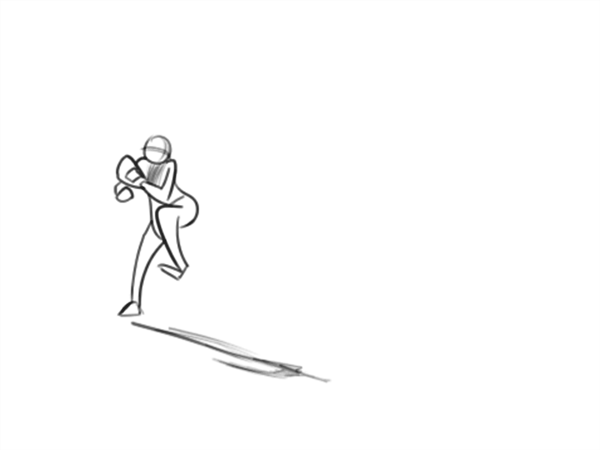

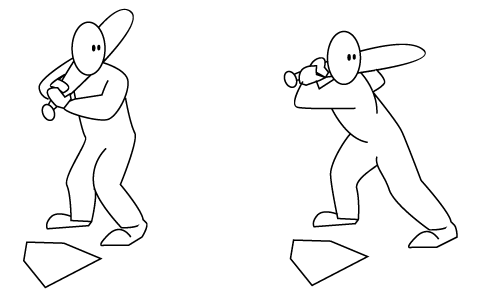








.jpeg)

.jpeg)



.jpeg)








.jpeg)






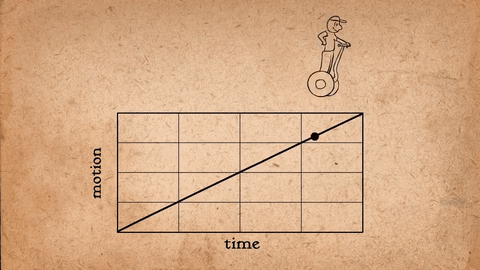


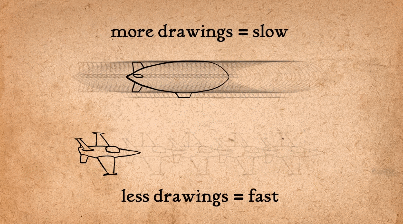



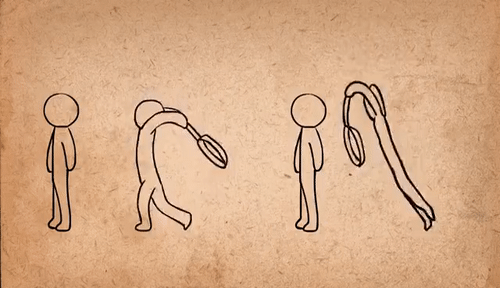








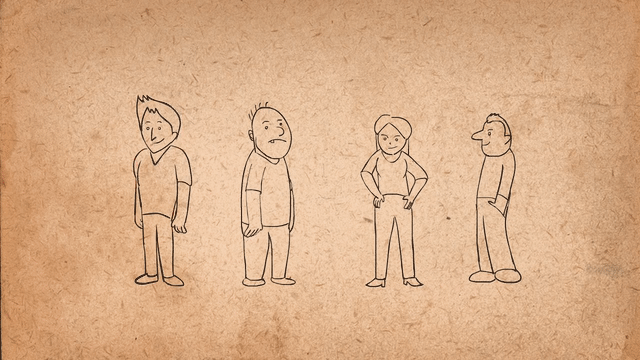
1981 Disney Animation Special! - The Illusion of Life -Part1
Week 9: Remakes and Sequels
With Mr. Florian Stephens MA, BA (Hons), PGCTAD FHEA
Senior Lecturer in Digital Media
Doctoral Researcher
Understanding remakes and sequels, what they are and the role of visual effects in the remake.


King Kong 2005 with Naomi Watts Fay Wray in King Kong 1933
Like in television series and games, films based on earlier productions are called "remakes", which have the same story, but different actors, and sometimes few or one of the old cast may appear in the new version, depending on various factors. Ex: King kong, 1933, where the characters Ann Darrow and Carl Denham were played by Fay Wray and Robert Armstrong; King Kong 2005, Ann Darrow and Carl Denham were played by Naomi Watts and Jack Black. Obviously, in this case no original actors were used because of the time when the film was made. But some times, film productions remakes do cast the same actors. Ex: Ricki Lake (Hairspray), 1988 and 2007; Bill Murray and Dan Aykroyd (Ghostbusters) in 1984 and 2016 by the fact that the public is familiar with the actor. It is a way of targeting the public to make money. To go a bit further before discussing the VFX, some film remakes go as far as changing the theme. Ex. In the article "Disney’s Mulan remake will try to combine multiple, conflicting, themes" (2020), Dirk Libbey says that the theme is changed to be more appealing to the Chinese audience.
In sequels of literature, theatre, television, music, video games, and also film as our many topics here, there is a continuation usually of an original story. But what is the role of VFX in the remake?
The article "2016’s remakes, reboots and sequels show how special effects have evolved" (2016), Jeff Peterson says for the Deseret News "Equally appropriate for movies such as these, though, is another common expression: “They sure don’t make ’em like they used to” — quite literally, in fact.
The advent of digital special effects completely changed the way movies such as “Ghostbusters” are made."
The World digital era seems to be more appealing for the new generations, as films like Ghostbusters and any other that can active a sense of reality in the fictional world, fascinates the public everyday and will keep doing so.
Sources
King Kong (1933). (1933, April 7). Retrieved from https://learningonscreen.ac.uk/ondemand/index.php/prog/000217D1?bcast=132025613
King Kong (1933). (1933, April 7). Retrieved from https://www.imdb.com/title/tt0024216/?ref_=kw_li_tt
King Kong (2005). (2005, December 12). Retrieved from https://www.imdb.com/title/tt0360717/?ref_=kw_li_tt
Hairspray (1988). (1988, February 26). Retrieved from https://www.imdb.com/title/tt0095270/?ref_=fn_al_tt_1
Hairspray (2007). (n.d.). Retrieved from https://www.imdb.com/title/tt0427327/fullcredits?ref_=tt_cl_sm#cast
Ghostbusters (1984). (1984, June 8). Retrieved from https://www.imdb.com/title/tt0087332/?ref_=fn_al_tt_1
Ghostbusters (2016). (2016, July 11). Retrieved from https://www.imdb.com/title/tt1289401/?ref_=fn_al_tt_2
Libbey, D. Disney’s Mulan remake will try to combine multiple, conflicting, themes. (2020, March 5). Retrieved from https://www.cinemablend.com/news/2491372/disneys-mulan-remake-will-try-to-combine-multiple-conflicting-themes
Peterson, J. Deseret News. (2016, July 15). 2016’s remakes, reboots and sequels show how special effects have evolved. Retrieved from https://www.deseret.com/2016/7/15/20592062/2016-s-remakes-reboots-and-sequels-show-how-special-effects-have-evolved#ghostbusters-patty-tolan-leslie-jones-abby-yates-melissa-mccarthy-erin-gilbert-kristen-wiig-and-jillian-holtzmann-kate-mckinnon-in-columbia-pictures-ghostbusters
King Kong 2005 King Kong 1933


List of points of the video "Movie Remakes That Were Better Than The Original"
Uploading... in the way!!
Week 10: An introduction to Concept of The Composite
With Mr. Florian Stephens MA, BA (Hons), PGCTAD FHEA
Senior Lecturer in Digital Media
Doctoral Researcher
VFX Games - The Art of Compositing
The presenter of the video above, mention a fast overlook in some of the various stages of visual effects production, required to add to a film, he also introduce some the techniques used in VFX thats will be accomplished in various stages of the film production. To organise various stages that will be accomplished by the Visual Effects artists and all department is called Pipeline.
The pipeline is the key of a success of a final film product that evolves Visual effects. Pipeline is present in the Pre-production soon the idea of the film is developed, script written, budget of the film, Internal and external locations like studios, that suits the Visual effects shooting; Production, set in the green screen studios, locations in external and internal sets; Post-production, where visual effects are applied if some already has be made in the production process.
Digital composing is a creative process of assembling film and rendering elements from multiples sources to recreate a final life like illusions. But it is not that easy as maybe the audience think, it requires many hours of hard work in the post-production process.
Its process that includes many different skills, like rotoscoping with separates de foreground of the background and all kinds of techniques to accomplish it.
It uses the blue and the green screens to easily extract the background of the scene behind the actors and any other objects, it's a process called keying.
Keying creates a realistic environment behind in the scene, actors, objects and any other structures in the first plan of the shot.
Tracking is also a part of the work of the
VFX, that requires a good skill to do it right and to recreate the exact movements of the camera it is used the 3D and 2D tracking.
Not to forget to mention the objects of the set that can be removed, like cables, and any other equipments to be replaced by any other digital work that is useful to the context of the shot or scene.
The computer generated elements that is also known of CG composing.
Rotoscoping


Tracking


My own experience with Pipeline and various similar departments involved with it, to contribute to the VFX.
Goitaca 2020 - Directed by Rodrigo Rodrigues
Art work_photos film Goitaca copyrighted - Rodrigo Rodrigues Studios














Inspired: Metropolis 1927_King Kong 1933
With Mr. Florian Stephens MA, BA (Hons), PGCTAD FHEA
Senior Lecturer in Digital Media
Doctoral Researcher
Inspired by the magical world of DVFX in film.
Following florian lectures in the beginning of the course Week 3: Special Effects - History and Context, the film Metropolis 1927, directed by Fritz Lang called my attention, I learned about the visual effects and designs of the Lang's film, that still influences the directors today and certainly spired my own work. Mentioned in Mr florian lecture's learning material of this week 3 the film contain cultural links to German expressionism, so I definitely checkout out the film that late spired me to create my own 3D modelling character assignment in Digital Sculpture.
Lang definitely inspires contemporary directors like my own work.
In sequence I also investigated the film King Kong 1933 that already has inspired my creation in the past with miniatures building that I concluded for some experiments own my art studios in Brazil few years ago. The inspiration extracted from all of this investigations of the texts documents and visual presentations of the lectures, open the doors of my creativity to keep going with my organic way to work with miniatures set building and of course mixing it all with the Computer Digital Imagery. Creativity is part of our human nature, some times the creation and imagination goes as far as our hands couldn't built, so DVFX give us contemporary creators to express and transform our visions into reality, believable to the human eyes. Thanks to Computer-Generated Imagery, Bullet time, Stop Motion Animation, Matte Painting, Motion Control Photography, virtual cinematography, etc.
Rodrigo Rodrigues
Visual effects student at University of west London



Metropolis 1927 "The mediator of the head and the hands must be the heart." Maria












Week12: Assignment 2 - Presentation
With Mr. Florian Stephens MA, BA (Hons), PGCTAD FHEA
Senior Lecturer in Digital Media
Doctoral Researcher






With Mr. Florian Stephens MA, BA (Hons), PGCTAD FHEA
Senior Lecturer in Digital Media
Doctoral Researcher
Rodrigo Rodrigues 21467859
Module: Principles of VFX (10-JAN-21)
Tutor: Mr. Florian Stephens
BA (Hons) Visual Effects.
University of West London
How has Visual Effects impacted film narrative?
The endless discussion: Computer generated imagery presents it's digital functionality. The new advanced technology available for few, appreciated by some, watched by all and interestingly also creates discomfort for many others.
Tom Gunning expresses his disappointment in how early 20th century's film history had been theorised and replaced by the narrative films, as standard in how cinema should be seen and received by the audience after 1910. This approach encourages a systematic belief that films mostly follow a theatrical storytelling, establishing the narrative as the main concept of the film format, undermining the early movies and misunderstanding, that the film was first presented to the audience using the imagery to storytelling. Quoting Méliès, Tom Gunning (D.W. Griffith and the Origins of American Narrative Film, 1994, pg. 30-32)
wrote “ Méliès points out, the trick film, perhaps the dominant non-actuality film genre before 1906, is itself a series of displays, of magical attractions, rather than a primitive sketch of narrative continuity”. I agree with Méliès and Tom Gunning's words, taking into consideration that early cinema exhibitions, were an attraction and I will follow and explore the “technological wonder” to approach the audience in an organic relationship, between“Its Spectator and the Avant-garde”.
Arise of special effects and visual effects: In “The execution of Mary, Queen of Scots” (1895), the director Alfred Clark, presents the first film known to screen Special and Visual effects to the public eye. Staging or acting out a past event of a historic fact, as Clark's Mary killing film by Edison Laboratory, presented to the viewers, has been understood and stated by all kind of sources, like a simple video in youtube for example, that Clark is working with a high level of narrative, as stated by Matt Barry in “1st Film with Special Effects - The Execution of Mary, Queen of Scots 1895”. Throughout time, visual effects took its place, not differently from back then, today, an endless discussion tries to underestimate the computer digital imagery.
My investigation indicates to me to pay close attention to the behaviour of the human structure of receiving and understanding an information.
Contemporary structure to understand information:
Detouring as far as history books has offered us, thousands of years in the past, story telling from ancient times and lost civilisations has been modified and some times forgotten. The practice of thinking, coming from the Ancient philosophy, has its beginning in a structure that may oppose many lost civilisations understanding in how to receive information throughout experiences, to reveal hidden feelings. In “Digital Storytelling: The Narrative Power of Visual Effects in Film” MacClean, S.T. (2008, p.g 15) wrote that Stephen R.L. Clark in his book “Ancient Philosophy”, stated “…the first storyteller became… philosophers and the mythologies we find recorded by later, literate thinkers are the distorted record - Aristotle was later to say—of past philosophy”. Following the same paragraph MacClean also wrote “In On Stories Richard Kearney, playing on Socrates’s famous statement, goes so far as to say that “the unwarranted life is not worth living.” MacClean says next that, “As these comments would suggest, it is certain that story-telling is fundamentally important to our cultures, our sense of identity - both as individuals and societies - and to our deepest thoughts and emotions”. MacClean concludes that story telling has many different forms, from oral story-crafts, painting, photography, picture motion to many others. Partially, supporting MacClean's final statements that narrative practice hypothesised art, ruling the way storytelling should be told, certainly way back in ancient times. Many lost civilisations lived their days practicing the art of telling stories, communicating their feelings based on experiences, instead of thinking, talking or writing. Visual effects has its similarity in the same context where storytelling does not need the narrative to tell story. However, the humanity structure of receiving information is mostly based in the acceptance of the their constant mechanical everyday living.
The structure of thinking vs experiencing feelings:
Based on my own experiences, the structure of thinking can be broken, opening a door in how to accept and understand new unknown information without a necessity of words nor structured thinking.
American Narrative, strategically created to educate the public, creating a wrong necessity of how storytelling should be told and received, based in books, staged theatres, TV, games, films and all kind of literature as can be easily recognised. The question is: How far it impacts the structural thinking formation of our society? Once the imposed rules of narrative is accepted by the majority of writers, film makers and artists, the public will follow and the film industry will embrace and negatively generalise any other form of storytelling that does not fit the hypothesised standards of American narrative. Suppressing film productions without a clear American narrative attached to their projects, many creators are going back to new forms of premiere the 'unfitted experimental projects', films, books, etc against the Hollywood standards. The truth always prevailed, and once again, these professionals are creating their own circles to show the importance that all kind of art should be seen and understood as an educational formation of societal behaviour throughout feelings, and not imposed concepts like the American narrative. Not stating that narrative is not important to film production, otherwise here, an endless discussion would be started again. These words written here, should be received with an open mind. All storytelling and any other form of art, plays an important part in our societies evolution.
Stephen Prince brings his thoughts and analysis, that surrounds and questions the visual effects skepticism, often discussed in visual effects in film studies.
In the article “Through the looking glass: Philosophical toys and digital visual effects” (Prince, 2010) Prince starts detouring to the beginnings of cinema, to an era where a well traveled bridge that cooperated to the creation and arising of numerous movies, gives the reader an understanding that Professor Prince is comparing the era of the philosophical toys in how digital tools are used in film productions today. This bridge connects Art to Science.
The article brings up a consideration and says that “fantastic words are built with a physically accurate rendition of the behaviour of solids, liquids, gases, light, movement and sound” (Prince, 2010, p.19). He also affirms that digital visual effects in cinema, are the domain of the area of contemporary culture. Certainly visual effects will keep holding the bridge that connects the art with science today.
Oral storytelling of forgotten civilisations, American Narrative in film and Visual Effects:
Detouring once again, the forgotten practices that tells, teaches and unveil informations uncovering hidden stories throughout visuals. These common practices were part of our ancestors, mostly presented by visual forms, without words, without the narrative and even without an oral storytelling that evolved in the ancient civilisation together with the art of thinking instead of inner feelings. Today, narrative in film enforces the concept of how we should tell the short or long story based in the past, present and future, factual or imagined events. Back then, in the unknown time for many people, an uncountable number of lost civilisations processed their information in the act of practicing their art to access their inner information as a group interaction. Today this is still available for those who desire to dig it deeper to apply to their art and to restructure their project out of the imposed art form the Narrative.
The writer, researcher and public speaker Shilo McClean in chapter 1 of her book “Digital storytelling: the narrative power of visual effects in film”, focuses on such arguments that spectacles of digital technologies undermines storytelling, giving the readers an opportunity to investigate pre-conceptual movie critics written by some professionals; “Sydney Morning Herald” Paul Byrnes, Joel Black, Laura Kipnis, David Bordwell, Janet Staiger and Kristin Thompson. The critics approach shows to be for each professionals self interest, related to their positions; Scriptwriters, Movie critics, Film theorists and or Filmmakers. Creativity has no limits and technology will follow it, as the book goes into the investigation of all apparently relevant critics, creates an upsetting feeling of misunderstanding of these critics towards certain departments like the DVFx, that is part of all production process and not just post-production. Storytelling “flaws” and or “success” depends on numerous factors in a film production and even in the audience point of view after the film release.
Visual effects in film certainly can be the best tool today to go along and tell the story with images leaving the viewers a chance to experience similar sensations of the past thats is or is not part of a narrative. Account my film directing experiences, Visual Effects, Storytelling, narrative, and any other art form and tools, comes to give us an opportunity to access our own gift of experience feelings based on our own experiences.
It should never be questioned which one is more useful than the other. Society evolves, different tribes and behaviours exists, and none of them will be able to suppress whats the most important; that is us all together. Freedom of creation and receiving others creation with an open mind to experience new forms and concepts expands our art form.
So, how has Visual Effects impacted film narrative?
The technical point of view to answer this question, should be started from the spectacular highlights that lights any object shape and environment locations adding to the light sources of the existent shots in specific scene. The high tech VFX tools contribute to the film industry to reproduce a believable environment digitally composed together with the real lights.
My last words above, are a single example, in how Visual effects impacts the narrative of a film. In the article “Over 100 years of VFX: Bringing imaginations to life” Joe Beedle (2020) says “Visual effects in recent decades has come into its own as a robust and lucrative creative industry within the larger worlds of film, television, and gaming. The industry capitalised on advances in technology to take visual storytelling to another level”. Visual Effects created the illusion of moving image with the first widespread animated device, the Phenakitoscope, James S. Blackton record the first animation using standard film in 1906, Winsor MacGay presents the first animated film 16/35mm “Gertie the Dinosaur”, the first film to create and use keyframe.
Throughout generations the VFX industries created thousands of jobs to VFX artists, inspiring the public with their unique talents.
The article "2016’s remakes, reboots and sequels show how special effects have evolved" (Jeff Peterson 2016) says for the Deseret News "Equally appropriate for movies such as these, though, is another common expression: “They sure don’t make ’em like they used to” — quite literally, in fact.
The advent of digital special effects completely changed the way movies such as “Ghostbusters” are made.
The World digital era seems to be more appealing for the new generations , as films like Ghostbusters and any other that can active a sense of reality in the fictional world, fascinates the public everyday and will keep doing so.
Visual effects does impact the film narrative in the totality of its functionality as a powerful tool to the final success of a film production, like any other department of the film, like the narrative does also for any other storytelling form of art and also for the visual effects process when its needed. Hopefully the endless discussion one day, will come to the end.
All art form cures, art teaches, art is a ceremony of life that should be expressed in the way it is desired, with or without technology.
Support and references:
Gunning, T. (2006) 'The Cinema of Attractions: Early Film, Its Spectator and the Avant-Garde', in Strauven, W. (1.) The Cinema of Attractions Reloaded. Amsterdam: Amsterdam University Press, pp. 381-388.
McClean, S.T. (2008). Once Upon a Time: Story and Story craft. In Digital storytelling: The narrative power of visual effects in film (p.15). MIT Press.
Maland, C. (1992). : D. W. Griffith and the origins of American narrative film: The early years at biograph .
Tom Gunning. Film Quarterly, 45(4), 30-32. doi:10.1525/fq.1992.45.4.04a00100
Gunning, T. (n.d.). Tom Gunning. (1994) D.W. Griffith and the Origins of American Narrative Film
Retrieved from https://www.press.uillinois.edu/books/catalog/87gbw5tr9780252063664.html
Clark, A. (1895) The execution of Mary, Queen of Scots. Retrieved from https://www.youtube.com/watch?v=KrbHwz9_NQk
Prince, S. (2010). Through the looking glass: Philosophical toys and digital visual effects. Projections, 4(2), 19-38. https://doi.org/10.3167/proj.2010.040203
Peterson, J. (2016). 2016’s remakes, reboots and sequels show how special effects have evolved. Retrieved from https://www.deseret.com/2016/7/15/20592062/2016-s-remakes-reboots-and-sequels-show-how-special-effects-have-evolved#ghostbusters-patty-tolan-leslie-jones-abby-yates-melissa-mccarthy-erin-gilbert-kristen-wiig-and-jillian-holtzmann-kate-mckinnon-in-columbia-pictures-ghostbusters
Jov journal of vision. (2020, November). Specular highlights improve color constancy when other cues are weakened | JOV | ARVO journals. Retrieved from https://jov.arvojournals.org/article.aspx?articleid=2771947
Gertie the dinosaur (1914). (n.d.). Retrieved from https://publicdomainreview.org/collection/gertie-the-dinosaur-1914
Beedle, J. (2020). “Over 100 years of VFX: Bringing imaginations to life.” The Focus. Retrieved from https://www.thefocus.com/news/history-of-vfx-imagination-life